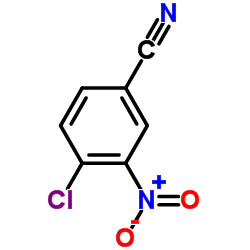Structure-activity relationships of alkyl- and alkoxy-substituted 1,4-dihydroquinoxaline-2,3-diones: potent and systemically active antagonists for the glycine site of the NMDA receptor.
S X Cai, S M Kher, Z L Zhou, V Ilyin, S A Espitia, M Tran, J E Hawkinson, R M Woodward, E Weber, J F Keana
Index: J. Med. Chem. 40(5) , 730-8, (1997)
Full Text: HTML
Abstract
We report on a series of alkyl- and alkoxy-substituted 1,4-dihydroquinoxaline-2,3-diones (QXs), prepared as a continuation of our structure-activity relationship (SAR) study of QXs as antagonists for the glycine site of the N-methyl-D-aspartate (NMDA) receptor. The in vitro potency of these antagonists was determined by displacement of the glycine site radioligand [3H]-5,7-dichlorokynurenic acid ([3H]DCKA) in rat brain cortical membranes. In general, methyl is a good replacement for chloro or bromo in the 6-position, and alkoxy-substituted QXs have lower potencies than alkyl- or halogen-substituted QXs. Ethyl-substituted QXs are generally less potent than methyl-substituted QXs, especially in the 6-position of 5,6,7-trisubstituted QXs. Fusion of a ring system at the 6,7-positions results in QXs with low potency. Several methyl-substituted QXs are potent glycine site antagonists that have surprisingly high in vivo activity in the maximal electroshock (MES) test in mice. Among these, 7-chloro-6-methyl-5-nitro QX (14g) (IC50 = 5 nM) and 7-bromo-6-methyl-5-nitro QX (14f) (IC50 = 9 nM) are comparable in potency to 6,7-dichloro-5-nitro QX (2) (ACEA 1021) as glycine site antagonists. QX 14g has an ED50 value of 1.2 mg/kg iv in the mouse MES assay. Interestingly, alkyl QXs with log P values of 0.5 or less tend to be more bioavailable than QXs with higher log P values. QX 14g has 440-fold selectivity for NMDA vs alpha-amino-3-hydroxy-5-methyl-4-isoxazolepropionic acid (AMPA) receptors, as determined electrophysiologically under steady-state conditions in oocytes expressing rat cerebral cortex poly(A)+ RNA. Overall, 14g was found to have the best combination of in vitro and in vivo potency of all the compounds tested in this and previous studies on the QX series.
Related Compounds
| Structure | Name/CAS No. | Molecular Formula | Articles |
|---|---|---|---|
 |
4-Chloro-3-nitrobenzonitrile
CAS:939-80-0 |
C7H3ClN2O2 |
|
Novel radiotracers for imaging the serotonin transporter by ...
2000-08-10 [J. Med. Chem. 43(16) , 3103-10, (2000)] |
|
Vibrational analysis of 4-chloro-3-nitrobenzonitrile by quan...
2013-04-15 [Spectrochim. Acta. A. Mol. Biomol. Spectrosc. 107 , 248-55, (2013)] |
|
Finding of the low molecular weight inhibitors of resuscitat...
2009-01-01 [PLoS ONE 4(12) , e8174, (2009)] |
|
4-Chloro-3-nitro-benzonitrile.
2008-01-01 [Acta Crystallogr. Sect. E Struct. Rep. Online 65(1) , o92-o92., (2008)] |